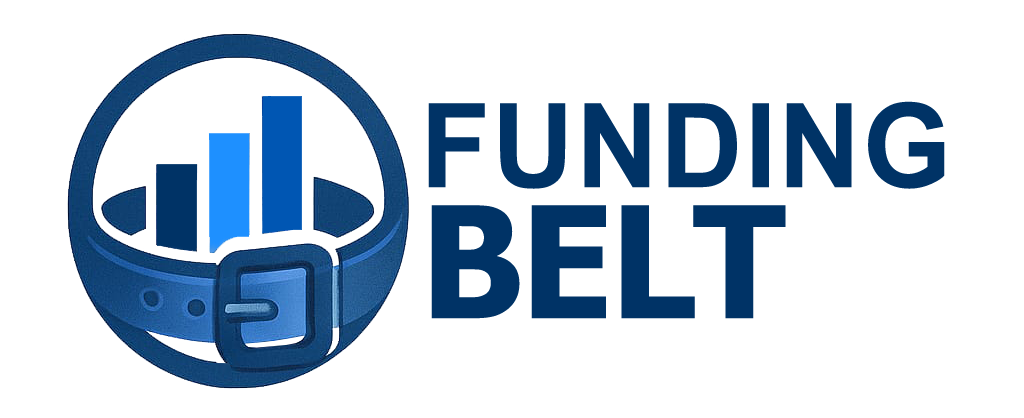Tier 2 Vendors
Building Stronger Foundations with Tier 2 Vendors
For businesses looking to move beyond the early stages of building credit and credibility, Tier 2 vendors represent a major leap forward. At Funding Belt, we help entrepreneurs and small business owners strategically advance through each level of business credit growth, and Tier 2 vendors are the connective bridge between foundational trade lines and mid-level financing opportunities. Reaching this stage is not just about getting approved for more credit—it’s about positioning your business as trustworthy, stable, and financially mature in the eyes of lenders and credit bureaus.
Tier 2 vendors generally report to one or more of the major business credit bureaus and often require a consistent payment track record, active business profiles, and a stronger financial foundation than Tier 1 vendors. They expect proof that your company can responsibly manage trade credit while scaling operations. Partnering with these vendors helps you build on the work you’ve already done through smaller credit relationships, creating a more credible business profile that lenders recognize and respect.

Happy Clients
Projects Done
Countries
Daily Visitors
Why Tier 2 Vendors Matter in Business Credit Growth
When moving through the process of building business credit, each vendor level plays a specific role. Tier 1 vendors serve as the entry point, helping verify a company’s identity, establish trade lines, and demonstrate initial creditworthiness. Tier 2 vendors build on that by offering higher credit limits, expanded product lines, and more reporting relationships with business credit bureaus like Dun & Bradstreet, Experian Business, and Equifax Commercial.
The accounts you open and responsibly manage at this stage act as signals to financial institutions. They show that your business not only knows how to handle basic supplier credit but can consistently manage larger obligations. This pattern of responsible financial management plays a vital role in qualifying for Tier 3 vendors, corporate cards, and business loans in the future. Without strong Tier 2 relationships, businesses often face slow credit growth and limited funding opportunities.
Solidify Business Credit Integrity
At this stage, your focus should be on maintaining impeccable payment performance and solid business data. The habits built through Tier 2 vendors—timely payments, vendor selection strategy, and data accuracy—become the foundation for sustainable financial credibility. Each action contributes to a credit image that lenders instantly recognize as trustworthy, professional, and prepared for growth.
Funding Belt works as your strategic partner during this phase. Our tools and coaching systems ensure that all records are precisely aligned for credit reporting and that your payment behavior continues to strengthen your business identity. This consistency pays lasting dividends when applying for funding or negotiating supplier terms.
Sustain Momentum Through Smart Management
Credit building doesn’t stop when your reports look strong. Sustaining momentum is just as crucial as achieving it. Regularly using vendor accounts, monitoring bureau activity, and evaluating your credit mix ensure that your progress continues upward. Proactive oversight is often what separates businesses that plateau from those that keep climbing.
The Funding Belt approach prioritizes long-term management. By integrating financial routines into your operational workflow, we help make credit-building a seamless and ongoing part of your business, not an isolated project. This method secures your trajectory and makes you always ready for the next financing opportunity that comes your way.
Advance Confidently Toward Greater Opportunities
Every Tier 2 vendor relationship you establish brings you a step closer to greater financial autonomy. The confidence you build here prepares you for more substantial funding, partnerships, and strategic expansion. At this level, your business is no longer proving credibility—it’s demonstrating capability.
Funding Belt supports your transition from reliance on vendor credit to commanding a respected position in the broader credit environment. With guidance, discipline, and the right vendor relationships, your business evolves into a financially empowered entity, ready to operate, negotiate, and expand on stronger, smarter terms.
The Role of Consistent Business Information
Before applying for Tier 2 vendor accounts, it’s essential that all your business information is consistent across platforms. The accuracy of details like your address, business name, EIN, phone number, and business type across listings, registrations, and credit applications ensures that bureaus can correctly match your credit history to your entity. At Funding Belt, we help clients verify these details before advancing to this level, ensuring that every piece of information contributes effectively to credit growth.
Many businesses encounter delays or denials at the Tier 2 stage simply because their profiles contain inconsistencies or missing elements. This stage is not just about having trade lines—it’s about creating a data trail that lenders trust. Whether it’s updating your records with Dun & Bradstreet or maintaining accurate data with the IRS, attention to detail will make your Tier 2 journey much smoother.
Meeting the Basic Requirements for Tier 2 Credit
A common misconception among small business owners is that vendor credit is automatically granted once you reach Tier 2. However, this stage introduces more scrutiny than the initial one. Most Tier 2 vendors will expect you to have at least 3 to 5 active trade lines reporting, an existing Paydex score above 75, and proof of timely payments over several months. Having a registered business, an EIN, and a business bank account are baseline necessities by this point.
Lenders and vendors at this stage want to see that you can maintain stability over time. They may look at your business credit reports, verify your operational years, and even check that your business has an online presence consistent with professional standards. By preparing these elements before applying, Funding Belt clients maximize their chances of rapid approval and minimize the risk of application rejections that slow progress.

Expanding Purchasing Power Through Tier 2 Credit Accounts
One of the most impactful advantages of Tier 2 vendors is the increased purchasing power they offer. Compared to Tier 1, Tier 2 credit lines often range higher, allowing businesses to make more substantial purchases that directly fuel growth. This could involve office equipment, technology solutions, industrial supplies, logistics services, or even corporate fuel and maintenance programs.
These accounts not only improve day-to-day cash flow by extending payment timelines but also play a strategic role in building larger credit limits in the future. Consistently paying your invoices on time—or even early—helps demonstrate responsible credit management. As this positive behavior is reported to the credit bureaus, your company’s credit profile becomes more attractive, opening the door to better funding terms and higher vendor trust.
Partnering with the Right Vendors at the Right Time
Selecting vendors at this level requires more strategy than Tier 1. The right Tier 2 vendor accounts align with your business goals, operational needs, and credit-building plan. Some vendors report to one bureau, others to multiple. Understanding which vendors contribute most effectively to your business credit profile can accelerate your journey to higher tiers.
Funding Belt guides clients in selecting vendors whose reporting patterns complement their existing trade lines. For example, if your previous vendors reported only to Dun & Bradstreet, you might benefit from adding Tier 2 accounts that report to Experian Business or Equifax Commercial. The goal is to diversify your business credit visibility so you’re recognized across all platforms lenders consult.

Maintaining Discipline With Payment Histories
A strong payment track record remains the cornerstone of business credit development, especially at the Tier 2 stage. Payment history directly influences scores and credibility, and missed or late payments can undo months of progress. Even a single late payment can cause lenders to question your reliability.
Funding Belt emphasizes the importance of automated systems and proactive monitoring. Setting reminders, scheduling early payments, and verifying that vendors correctly report your payments are key parts of the process. In cases where vendors allow early-pay discounts, it’s advantageous to take them, as they simultaneously save money and demonstrate strong liquidity to the reporting agencies.
Aligning Credit Accounts With Business Strategy
Tier 2 vendors aren’t just tools for building credit—they’re also strategic partners that can support your ongoing operations. Whether your company focuses on construction, e-commerce, consulting, or transportation, the vendors you select should supply goods or services that you genuinely use. This approach helps integrate credit building into your daily workflow rather than treating it as a separate task.
When financing operations aligns with your purchasing cycles, you gain both short-term flexibility and long-term efficiency. You can manage cash flow more smoothly while keeping a positive relationship with vendors whose products support your business model. These synergies are the difference between routine credit building and strategic financial growth.
Understanding the Credit Reporting Landscape
At the Tier 2 level, familiarity with how business credit reporting works becomes a real advantage. Different vendors report to different combinations of credit bureaus, and each bureau has specific algorithms for assessing payment history and financial risk. Dun & Bradstreet focuses heavily on your Paydex score, which rewards early payments. Experian Business includes both credit utilization and public records in its scoring. Equifax Commercial, meanwhile, tends to evaluate trends over time to measure consistency.
Understanding these differences allows you to balance your credit portfolio effectively. Working with Funding Belt gives you insights into which vendors most powerfully influence each bureau and how to tailor your accounts for optimal impact. Balanced credit reporting can distinguish your company when seeking large-scale funding or partnership opportunities later on.
Digital Presence and Business Legitimacy
By the Tier 2 phase, lenders and vendors often review your company’s online presence as part of their credibility assessment. They look for a consistent professional image: a business website, verified contact details, social media accounts, and an identifiable domain-based business email address. Having a complete, trustworthy digital footprint can sometimes be the deciding factor between approval and denial.
At Funding Belt, we coach business owners to maintain an industry-standard online appearance while advancing through each credit tier. This includes updating your website, maintaining consistent branding, and ensuring your online listings match your business records. A professional digital ecosystem makes your company appear well-established and dependable—two qualities every Tier 2 vendor values.
How Tier 2 Vendors Strengthen Financial Leverage
Securing and successfully managing several Tier 2 vendor accounts significantly boosts your business’s financial leverage. Each reporting account acts as a separate verification point for lenders and credit bureaus, showing that your company can manage multiple obligations concurrently. This multidimensional record of responsibility brings you one step closer to qualifying for revolving credit lines, equipment financing, and bank loans.
In practical terms, your credit limit grows in tandem with your credibility. Vendors that initially offer modest payment terms—perhaps net-30 or net-45—may gradually extend those limits based on performance. When this happens across several accounts simultaneously, your business gains more operational flexibility and a stronger cash flow position, both of which are vital for scaling up.

Transitioning From Vendor Credit to Broader Funding
The Tier 2 phase is often the pivot point between vendor-based credit and true institutional funding. Once you’ve demonstrated competence in managing multiple larger trade lines, your profile becomes suitable for higher-tier financing, such as Tier 3 vendors, business credit cards, or working capital loans. Banks and private lenders interpret strong Tier 2 histories as proof that your company handles obligations professionally.
Funding Belt designs credit-building roadmaps that help businesses move seamlessly through this transition. By the time our clients reach Tier 3, they’re fully prepared with robust Paydex scores, diverse trade lines, and excellent payment reputations. Each stage builds on the last, ensuring your company doesn’t just qualify for credit but thrives with it.
Avoiding Common Mistakes at the Tier 2 Level
Even established businesses can make costly mistakes when managing Tier 2 vendors. Some overextend too quickly, applying for too many accounts at once, while others neglect to monitor reporting accuracy. Both issues can impede credit progress. Each new account should be opened intentionally, with a clear understanding of its impact and purpose.
Another frequent error is failing to maintain consistent usage across trade lines. Vendors and bureaus value ongoing activity. Accounts that remain dormant for long periods may stop reporting or lose credit-building efficacy. At Funding Belt, we advise a balanced approach—regular activity across accounts without exceeding available credit limits. The goal is to showcase steady, reliable business operations.
Leveraging Data for Smarter Credit Management
Modern business credit building benefits from data-driven insights. Tracking your company’s evolving credit profile helps identify growth opportunities and detect reporting gaps early. By monitoring bureau reports periodically, you can verify that all vendor payments accurately appear and spot discrepancies before they become obstacles.
Funding Belt integrates analytics and reporting tools into our coaching process. These tools help clients visualize credit progression over time, understand how each vendor contributes to their overall profile, and make data-backed decisions about which directions to move next. Precision and transparency enable faster advancement and greater control over your company’s financing destiny.
Establishing Relationships Beyond Credit
As your organization matures, the value of vendor relationships extends far beyond credit reporting. Reliable partnerships built at the Tier 2 level can evolve into long-term business collaborations that deepen over the years. Vendors who see your business as dependable are more likely to offer favorable terms, discounts, or even referrals to additional opportunities within your industry.
Consistency breeds trust. When you treat every vendor engagement as both a credit opportunity and a professional relationship, you build loyalty that extends to better pricing, reliability, and shared growth potential. Funding Belt encourages clients to nurture these connections as genuine business partnerships rather than short-term financial arrangements.
Demonstrating Growth and Maturity Through Tier 2 Performance
The journey through Tier 2 reflects not only financial stability but also operational maturity. Vendors at this level respond positively to businesses that demonstrate ongoing improvements such as expanded staffing, stronger revenue, and upgraded infrastructure. These indicators, though not always formally required, send strong signals that your business is on a growth trajectory.
At Funding Belt, we help clients harness those indicators to reinforce their credit strength. When your company consistently delivers on obligations and transparently reflects progress, lenders and bureaus view it as lower risk and higher potential. This image paves the way for greater funding leverage in later stages, positioning your brand for lasting credibility and scalability.
Building credit is not a one-time milestone. The market evolves, and so do the expectations of lenders and suppliers. Maintaining and improving credit standing through ongoing diligence will protect your business from future risks. Once you’ve achieved strong Tier 2 credibility, integrating continuous review processes ensures that your progress remains stable even as your company diversifies or scales.
Funding Belt provides structured tools and guidance to maintain this consistency. From annual credit audits to personalized payment tracking, ongoing oversight keeps your credit ecosystem healthy. A well-maintained Tier 2 credit base not only supports daily operations but also positions you advantageously for future economic shifts and financing opportunities.
Preparing for the Jump to Tier 3
After building a strong presence with Tier 2 vendors, your business becomes primed for Tier 3 relationships—those with corporate-level vendors, fuel cards, and lenders offering revolving lines and higher credit limits. Reaching Tier 3 is not just about fulfilling the numerical requirements but about demonstrating long-term reliability and financial discipline.
Funding Belt structures every credit journey with this progression in mind. The Tier 2 phase provides the experience and reporting foundation that makes Tier 3 attainable. By combining vendor diversity, payment consistency, and solid data management, your business can confidently make that leap, equipped with both credibility and functional financial agility.



